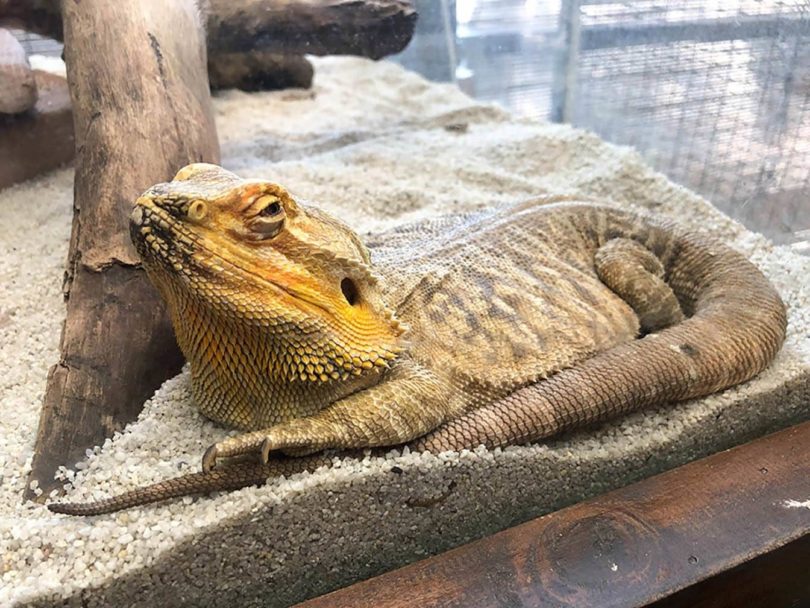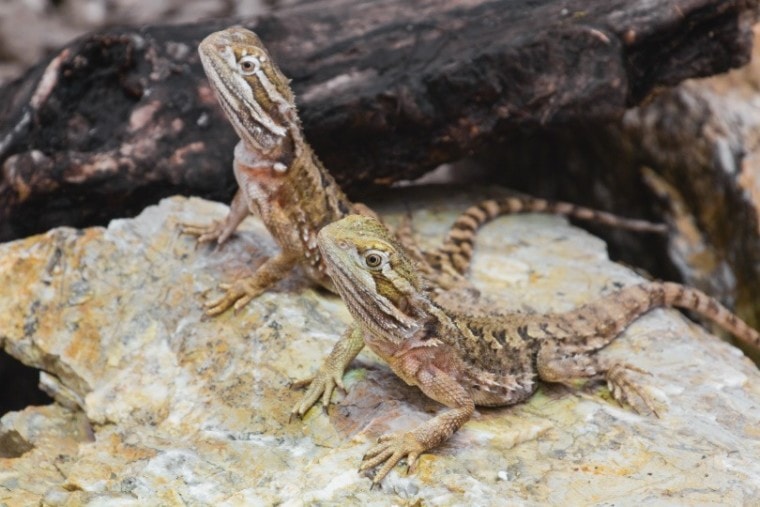
The bearded dragon is one of the most popular reptilian pets—particularly for beginners—thanks to their easygoing, gentle temperaments. That said, as with any reptile, there’s a fair bit to learn about getting their tank environment just right, especially in terms of lighting, humidity, and temperature—all factors crucial to your bearded dragon’s survival and overall well-being. But as a general overview the temperature of your bearded dragon’s tank will differ depending on whether it’s daytime or nighttime or whether they’re a baby, juvenile, or adult.
Learning the ins and outs of the perfect tank environment can be pretty intimidating for new bearded dragon parents, so, in this guide, we’ll discuss the best tank temperature for keeping bearded dragons healthy and happy. Before we get started, if you’re ever in doubt, please speak to your vet or an exotic pet expert about the best way to set up your tank.
Normal Tank Temperature
Wild bearded dragons inhabit deserts, savannahs, and subtropical woodlands across Australia—warm, dry places. As cold-blooded animals that lack the ability to regulate their own body temperature, domestic bearded dragons must live in an environment that replicates their natural habitat in order to survive.
The temperature of your bearded dragon’s tank will differ depending on whether it’s daytime or nighttime or whether they’re a baby, juvenile, or adult. The tank should have a warm zone with a basking area and a cooler zone on opposite ends of the tank, with the temperatures in the middle zone falling in between the temperatures of each side of the tank.
Furthermore, each tank should contain at least two thermometers to make sure you always have an accurate temperature reading and can monitor temperature appropriately.
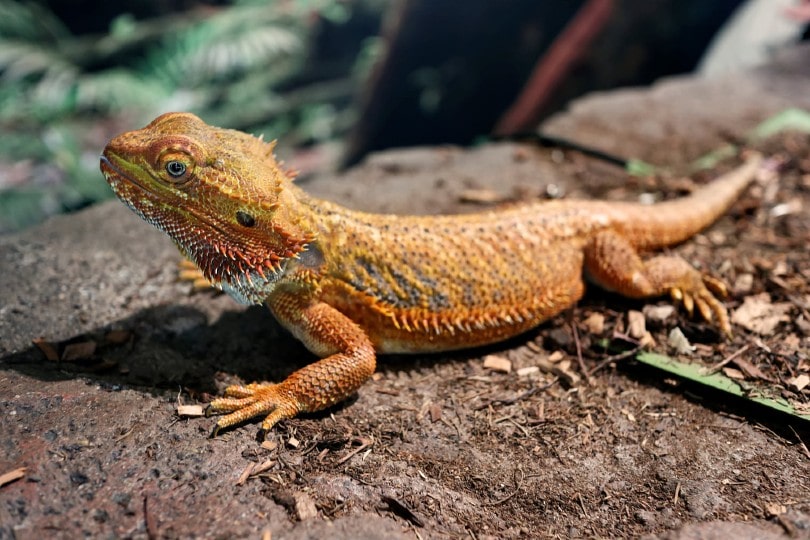
Normal Daytime Temperature
For adult bearded dragons, the daytime tank temperature should be maintained at between 80 and 88 degrees Fahrenheit. The basking spot should be maintained at between 95 to 105 degrees Fahrenheit.
The ideal basking zone temperature for baby bearded dragons is between 95 and 110 degrees Fahrenheit and the cooler zone should be between 80 and 90 degrees Fahrenheit.
For juveniles, the ideal basking zone temperature should be between 95 and 100 degrees Fahrenheit, and the cooler zone should be between 80 and 90 degrees Fahrenheit.
Normal Nighttime Temperature
At night, the tank temperature should be around 70 to 75 degrees Fahrenheit. If the nighttime temperature is dropping below 65 degrees, you may need to consider extra nighttime heating options. More on this below.
What Causes Low Tank Temperature?
A variety of factors can contribute to tank temperature drops. One of the potential causes is that you’re using a heat bulb with too low a wattage to keep the temperature up.
Another cause of temperature drops is a thermostat (which regulates the tank temperature) that’s not powerful enough to handle the demands of the tank. You may also not be using the best kind of thermometer for bearded dragon enclosures, which results in inaccurate temperature readings.
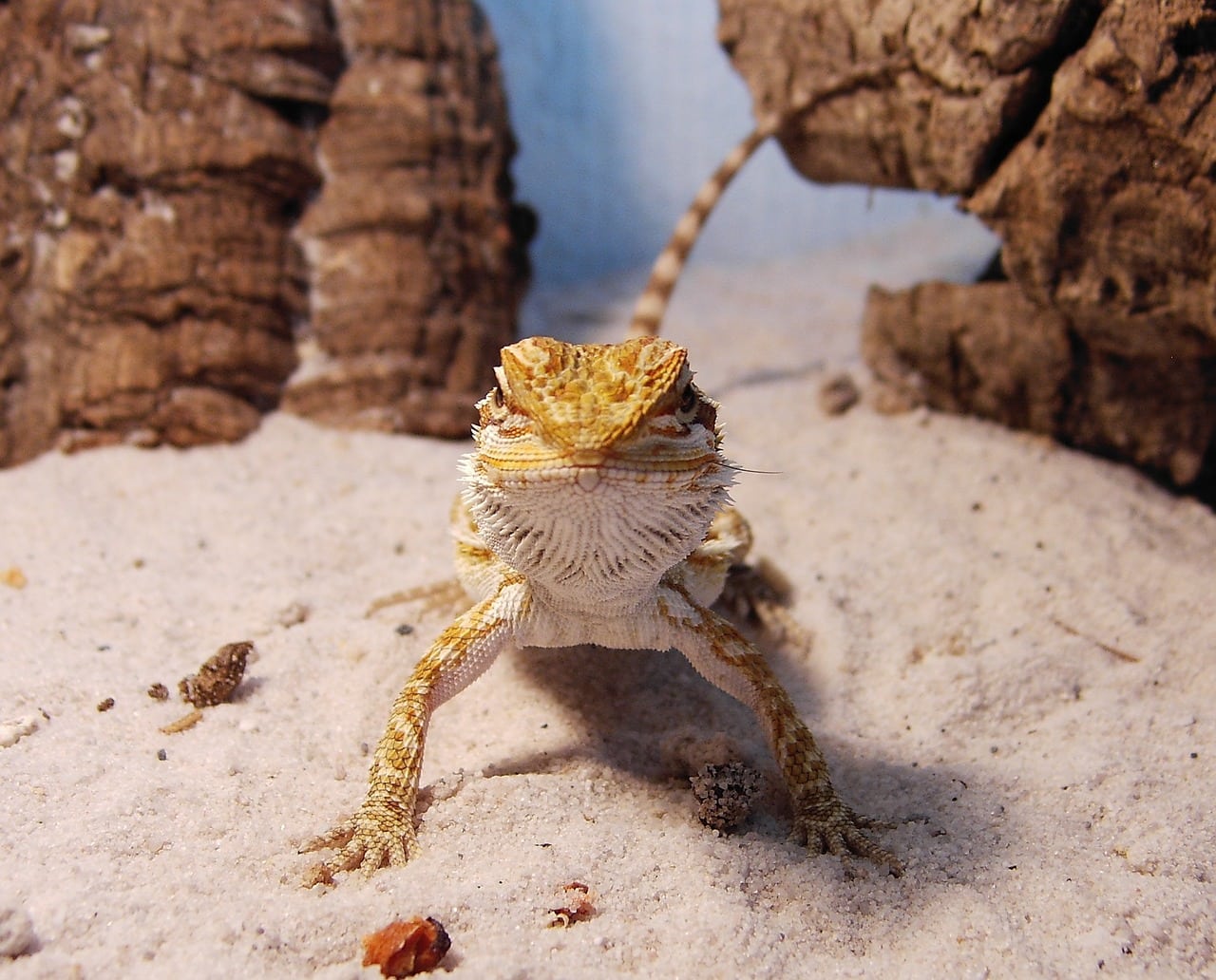
Oversized tanks can also cause the temperature to drop in the cooler zone. You may need extra heat sources for a larger tank. It’s also key to consider the kind of substrate you’re using, as this can also affect tank temperature. Sand, for example, is not a good substrate choice—it’s best to go for newspaper, paper towels, or reptile carpet.
Fortunately, there are some things you can do to raise the tank temperature to an appropriate level. Let’s explore this further.
How to Increase Bearded Dragon Tank Temperature
1. Get the Lighting Right
Bearded dragons need UV lighting in addition to an appropriately heated basking area. Mercury vapor bulbs are a popular choice as they ensure your bearded dragon is getting UVA and UVB lighting in one go while simultaneously heating up the tank.
However, mercury vapor bulbs may not be the best choice for tanks under 40 gallons as they reach pretty high temperatures, which can potentially be dangerous. If you’re using a mercury vapor bulb, ensure there are shady spots that your bearded dragon can retreat to and stick to safe wattage like 100 watts.
If you’re not using a mercury vapor bulb, you’ll need to provide an additional heat source for basking in addition to UVB lighting. There are several types of basking bulbs, including incandescent heat bulbs and halogen flood light bulbs.

2. Use Ceramic Heat Emitters at Night
Ceramic heat emitter bulbs are a popular choice for nighttime heating because they give off heat without giving off light. Light at nighttime can seriously interfere with your beardie’s sleep, so the tank needs to be kept dark at night.
3. Cover the Tank
If you have trouble keeping your tank at an appropriate nighttime temperature, try popping a blanket or towel over it. This isn’t likely to do much, but it may help stabilize the temperature.
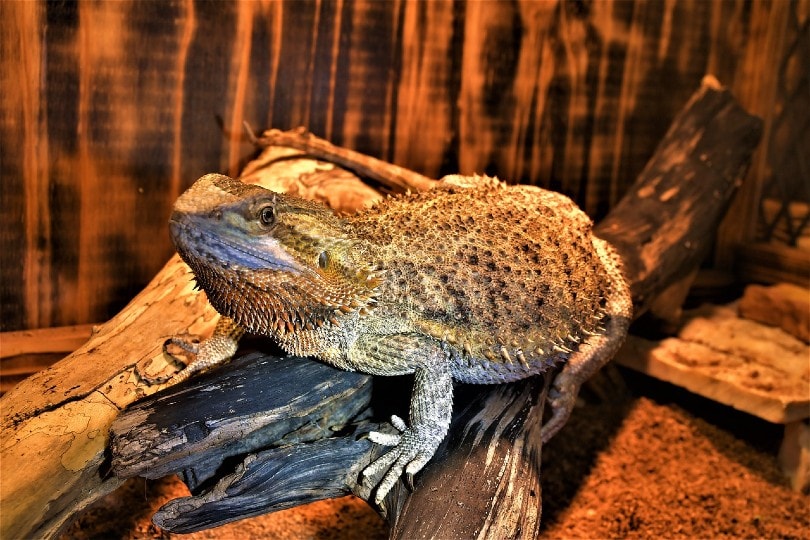
4. Warm Your Room Up
Keeping the room your bearded dragon’s tank is in warm (central heating, etc.) is a great way to keep your beardie warm at the same time.
5. Provide a Ramp for Basking
A basking ramp or basking platform won’t heat up the temperature of your bearded dragon’s tank, but it will help your beardie reap the benefits of the heat source. Remember to keep heat lamps around 12 inches above the basking area to prevent burns and overheating.
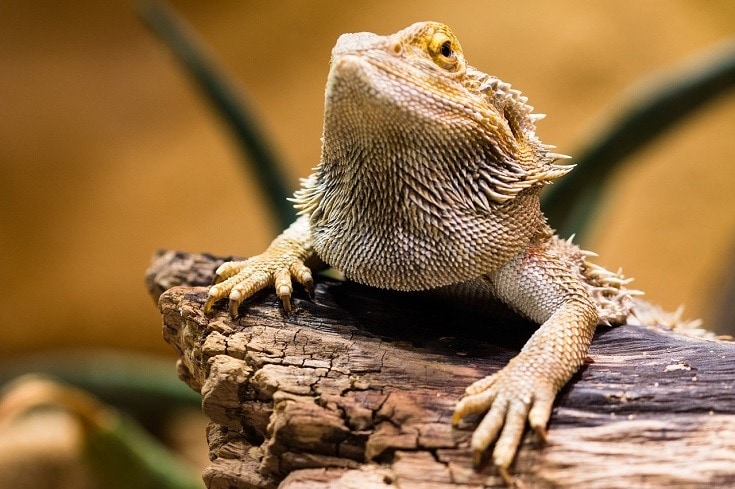
6. Use Digital Thermometers
Digital thermometers are more likely to give you an accurate temperature reading. Your tank should contain two thermometers at either end to help you keep an eye on the temperature in both the cooler zone and the warmer zone. It’s also a good idea to keep a handheld monitor to double-check the temperature. You should also use a high-range thermostat for temperature regulation.
 Ceramic Heat Emitter vs Heat Mats
Ceramic Heat Emitter vs Heat Mats
You may have heard of other heating sources like heat mats and heat rocks. It’s not recommended to use these as they have the potential to burn your bearded dragon, so ceramic heat emitters are the better choice. That said, under-tank heating mats may be a decent alternative, as they don’t physically come into contact with your beardie, but don’t use these with plastic or wood tanks.
Frequently Asked Questions (FAQs)
Can Bearded Dragons Get Too Hot?
Yes, they can if the temperature is too high, and the tank isn’t properly ventilated. Bearded dragons living in hot areas are most at risk.
To prevent overheating avoid placing your tank in direct sunlight, make sure your beardie always has clean water, and perform regular thermometer checks to make sure the tank temperature falls within the normal range.
If you allow your beardie to roam outside during summer, make sure there’s a shady area for them to go to and always supervise. Misting your bearded dragon with clean water throughout the day is also a good way to help keep them cool in summer.
Symptoms of overheating in reptiles include rapid breathing, panting, disorientation, staggering, loss of appetite, and wobbly gait.
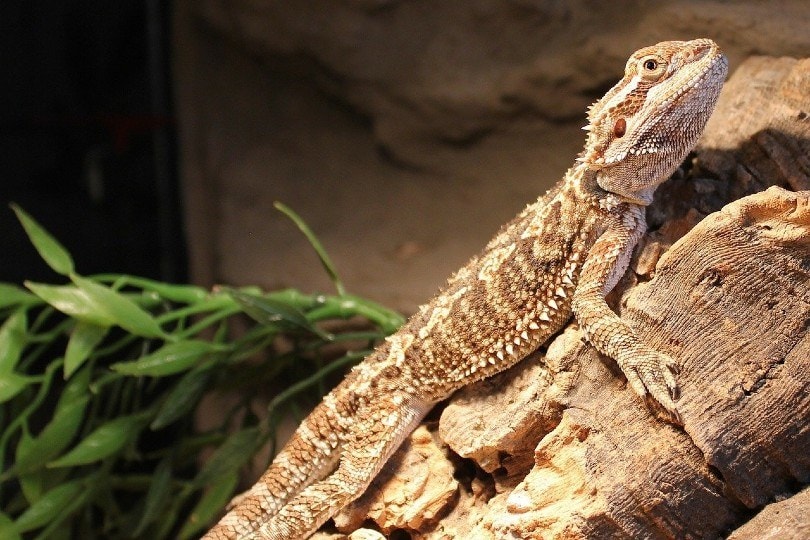
How Can I Cool My Tank Down?
To cool down your tank, you can try using fans in the room or installing a fan on the vents. In addition, you can mist the tank and offer your beardie a bowl with cool (not cold) water to bathe in if they need to.
It’s also a good idea to consider raising up your heating lamp by some inches, using a dimmer attachment, using a heat bulb with lower wattage, and turning off any extra heating sources—like under-tank pads—that you may be using. Move your tank to a cooler area and, again, keep it out of direct sunlight. You may need to close the curtains if necessary.
Conclusion
To conclude, the temperature in an adult bearded dragon’s tank should fall between 80 and 88 degrees Fahrenheit in the cooler zone and between 95 and 105 degrees Fahrenheit in the basking (warmer zone) during the daytime. At night, the temperature should be between 70 and 75 degrees Fahrenheit. The basking zone temperature is slightly warmer for babies and juveniles.
If you’re concerned about anything related to your bearded dragon’s health or tank setup, please consult your vet or an exotic pet expert to get the best possible advice.
See Also:
- German Giant Bearded Dragon: Facts, Care & Info (with Pictures)
- How Fast Do Bearded Dragons Grow? Vet-Approved Average Growth & Care Info
Featured Image Credit: TeeFarm, Pixabay

